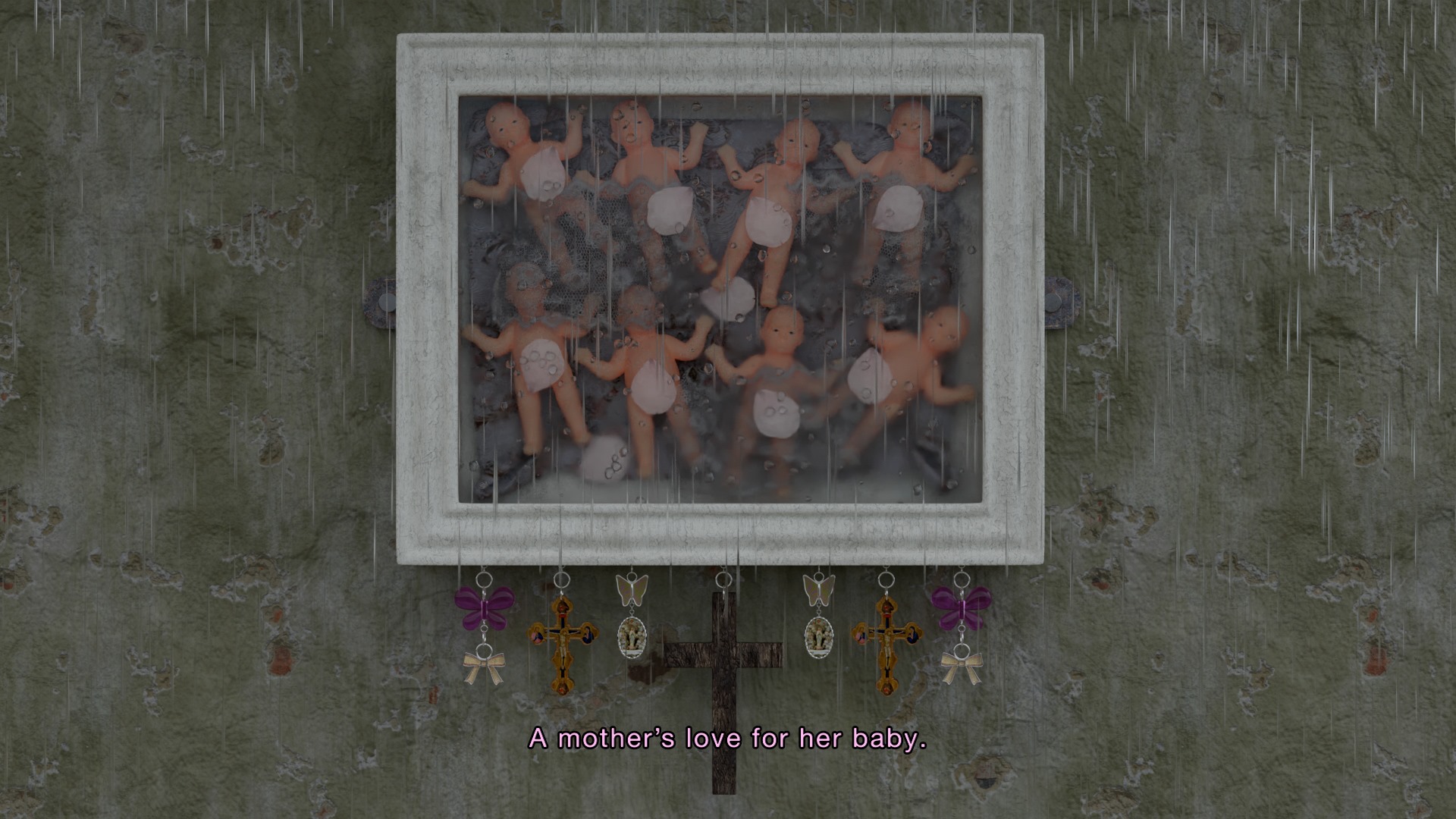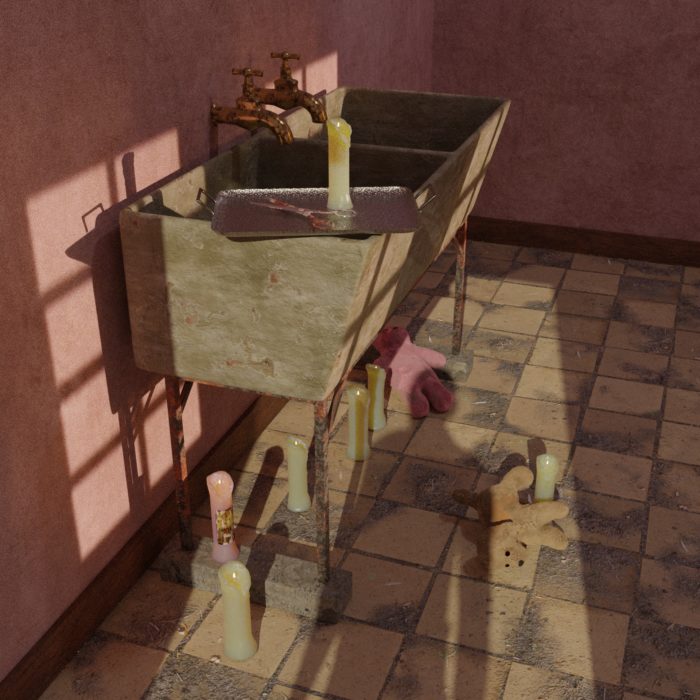Collaborative Residency | Cat McClay and Éiméar McClay

Market’s 2021 Studio Projects Collaborative Residency has been awarded to Cat McClay and Éiméar McClay. They are developing a project focused on the corrupt network of social institutions (Magdalene laundries, mother and baby homes, etc.), which were run by the Catholic church in Ireland during the 20th century. Through a combination of 3D animation, video games and written text, they will explore how the legacy of the abuses perpetrated in these institutions reverberates into the present day.
Cat McClay and Éiméar McClay are Irish collaborative artists based in Glasgow. In 2020, they graduated from Intermedia BA (Hons) at Edinburgh College of Art. Their practice considers ideas of queerness, abjection and patriarchal systems of power and oppression through an interdisciplinary body of work comprising video, 3D models, installation and digital collage.
Recently, experimental writing has been fundamental to their practice. Influenced by New Narrative techniques and contemporary queer literature, they have developed experimental and autotheoretical prose, which they have expanded into narratives for moving image work. Through using their own personal experiences as material in this way, they collapse the distance between author and viewer. By combining animation, popular culture and cultural theory, they reject arbitrary demarcations between high and low cultural material. Through this non-hierarchical approach, they aspire to make abstruse facets of theory and philosophy accessible to a wider audience. Their work often takes a critical approach: through appropriation and reinterpretation, they have subverted the heterocentric narratives of popular cultural texts including fairy tales and the Bible.
Central to this practice is an analysis of mechanisms of power: they are interested in thinking about where the queer body fits under capitalism and how it is excluded. Recently, their research has focused on the cultural, social and political influence of the Catholic church, particularly in Ireland. Through this study, they question the persistent ties between the Irish state and the church. This is reinforced by their exploration of the potentiality of magic and witchcraft as queer and anti-capitalist symbols of resistance, through which they imagine a futurity predicated on a radical break from the dominant logic of late capitalism. They often harness eschatological imagery (disastrous weather, fire, etc.) to explore the idea of end times associated with capitalism and attendant premonitions of catastrophic or redemptive futures.

